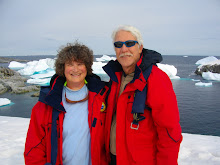Boeing announced Thursday that first flight of the 787 will be Tuesday, December 15, at 10 AM.
AVIATION WEEK :
The first of six test airplanes, ZA001, is due to take off from Payne Field next to the airplane's final assembly factory north of Seattle. Chief Pilot Michael H. Carriker and copilot Randall Neville will conduct low- and high-speed taxi tests that take the airplane to the threshold of flight in preparation for Tuesday's events.
Once airborne, Carriker and Neville are not expected to return ZA001 to Everett. They will land at Boeing Field in Seattle, headquarters for all of Boeing's commercial airplane flight tests.
The full flight program is nominally expected to last 8.5 months and follows about three years of pre-flight certification procedures that Boeing has conducted with the FAA.
If the flight schedule holds, FAA certification and delivery of the first production airplane - the seventh produced - to launch customer All Nippon Airways will be achieved late in 2010. But it is an aggressive schedule.
Normally, Boeing allows a week to 10 days after first flight for analysis before taking to the air again. With the Christmas-New Year holidays fast approaching, ZA001 may not fly again until January.
Seattle's Puget Sound region has enjoyed clear, sunny weather all week but is due to turn rainy next week. By itself, rain will not prevent the flight. But strong winds or low ceilings are factors that could result in a scrub.
Once it begins, the flight is expected to last as long as
5 hours as Carriker, Neville and an army of flight engineers on the ground evaluate both the feel of the airplane and the streams of data pouring from hundreds of sensors embedded in its fuselage, engines and systems.
The flight is intended to be conservative, establishing the basic flight envelope - the airplane's actual handling characteristics versus what computer models have predicted. While the flight of any new airplane draws attention, this one is special because it is the first for a commercial jet with a composite wing and fuselage.
Aside from its use of carbon fiber reinforced plastic - composite - wing and fuselage assemblies, the 787 also introduces a distributed electric architecture supporting its many flight systems. Those systems are heavily dependent on a central computer system and the airplane is studded with software code.











